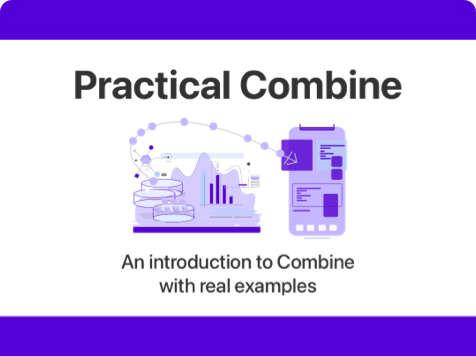One of Swift’s incredibly useful features is its ability to dynamically compute the value of a property through a computed property. While this is a super handy feature, it can also be a source of confusion for newcomers to the language. A computed property can look a bit strange if you haven’t seen one before; […]
Read post
Subscribe to my newsletter and never miss a post
Recent articles
Jump to a random postYou have probably seen and used a property list file at some point in your iOS journey. I know you have because every iOS app has an Info.plist file. It’s possible to create and store your own .plist files to hold on to certain data, like user preferences that you don’t want to store in […]
Read postUsing Result in Swift 5
Published on: March 2, 2020As soon as Swift was introduced, people were adding their own extensions and patterns to the language. One of the more common patterns was the usage of a Result object. This object took on a shape similar to Swift’s Optional, and it was used to express a return type that could either be a success […]
Read postIn Swift, we’re able to pass a KeyPath instead of a closure to certain functions. It’s what powers syntax like map(\.someProperty) which you might have seen before. In this post, we’ll compare what code looks like without KeyPaths as functions, and how passing a KeyPath as a function can simplify your code. // Swift 5.1 […]
Read postHandling errors in Swift is done using a mechanism where functions specify their ability to throw errors. In modern Swift versions (6.0 and up), functions can even specify the type of the error that the function might throw. When we call a function that can throw, we use special syntax to either ignore the error […]
Read postAdding default values to subscript arguments in Swift 5.2
Published on: February 19, 2020The ability to define custom subscripts in Swift is really powerful. It allows us to write very natural and concise code. Consider the following example of a Grid with a custom subscript: struct Grid { let items : [[GridItem]] subscript(x x: Int, y y: Int) -> GridItem? { guard !items.isEmpty, (items.startIndex…items.index(before: items.endIndex)).contains(x) else { return […]
Read postHow and when to use callAsFunction in Swift 5.2
Published on: February 17, 2020A new Swift 5.2 feature is the ability to call instances of types as functions. Or, as the Swift Evolution proposal calls it “Callable values of user-defined nominal types”. The very short description of this feature is that it allows you to call instances of any type that has a callAsFunction method implemented as if […]
Read postFor years we’ve had to resort to using physical devices when testing push notifications. With Xcode 11.4, Apple finally gives developers the tools needed to test push notifications on the iOS Simulator. I’m going to assume you already know how to add push notifications to your app. If you’ve never added push notifications to an […]
Read postSo far in my Combine series I have mostly focussed on showing you how to use Combine using its built-in mechanisms. I’ve shown you how Combine’s publishers and subscribers work, how you can use Combine for networking, to drive UI updates and how you can transform a Combine publisher’s output. Knowing how to do all […]
Read postFive ways to get better at receiving feedback
Published on: February 5, 2020When I just started my career as a developer there was a lot I didn’t know yet. There also were a lot of things I didn’t understand or had never done before. I have always been lucky enough to work in places where I was able to learn and grow as needed, and most importantly, […]
Read postExpand your learning with my books

Learn everything you need to know about Combine and how you can use it in your projects with Practical Combine. It contains:
- Thirteen chapters worth of content.
- Playgrounds and sample projects that use the code shown in the chapters.
- Free updates for future iOS versions.
The book is available as a digital download for just $39.99!
Learn more